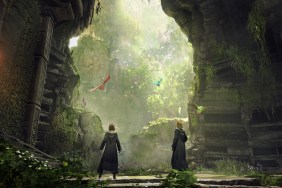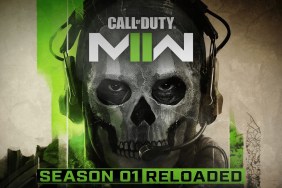Hell ain’t no bad place to be.
The Netherworld was never as goofy, deeply-strategic or easy on the eyes as it was served up in the original Disgaea: Hour of Darkness for the PS2. The game was an instant hit amongst the anime-minded nerd-core, and pretty much gave NIS license to crank out a roster of offbeat, challenging strategy games that continues in full force to this day. With Disgaea: Afternoon of Darkness, NIS not only faithfully ports the deep (and humorous, and often downright weird) PS2 strategy game to the PSP, but actually improves and expands it—and all without compromising or screwing up any of the original good stuff in the process.
[image1]Afternoon of Darkness opens—as basically does the Disgaea anime—with the cranky, pissy-tempered demon Laharl being awakened from a two-year sleep only to discover that, while he’s been napping, his Overlord Demon father has died… and that as a result, the whole of the Netherworld has gone berserk with every ambitious demon around scrambling to claim the throne.
Naturally, this news pisses Laharl off to no end, and he embarks on a massive, multi-episode adventure to ass-kick the infernal regions back into a shape he can accept. With the insolent demon-girl Etna at Laharl’s side from the outset, players proceed to an optional tutorial, or straight into the meat of the game. In the anime, it was actually a ditzy would-be assassin/angel who awakened Laharl—she appears later in the game too, along with a hefty roster of memorable and funny characters and potential party-members including other demons, ghosts, robots, space-traveler heroes and countless numbers of “prinnies”, the disposable, cannon-fodder penguin-like creatures who pepper their speech with the word “dood” and are notable for exploding on impact when thrown in battle.
As with several NIS titles, Afternoon of Darkness features a phased scheme of preparation and turn-based battles. Laharl’s castle functions as a safe hub complete with a weapon and items shop, a hospital (that actually rewards players for getting torn up badly in combat and thence healed), a “Dark Assembly” (a shadowy council-body which players can petition, bribe and/or flat-out coerce in order to create new party-characters, test and level-up existing ones, and indeed shape the outcome of just about every aspect of the game).
[image2]There is also a portal to a surreal, insanely-deep and hideously dangerous “Item World” where the very landscapes—which represent the inner, extra-dimensional essence of certain weapons and items in a way that’s never adequately explained—change on so radical and regular a basis that you can find yourself stranded in them. Once you start an Item World quest, you’re in a sort of multi-level, candy-colored Dantean inferno, where the only way out is down, and straight through the worst of it.
Overall, the game looks cartoony-cute and the dialogue (whose audio aspect can be toggled between English and Japanese, a nice touch) is often contentiously-funny. But the strategy aspect of the Disgaea world is all business, with interweaving schemes that can spiral in complexity to the point of madness, if you feel like treading down that path. Here is a game with over a hundred classes of characters that can be endlessly tweaked and leveled, along with items which can further be tweaked and leveled…and when you’ve maxed out that character, you have the option of “transmigrating” him/her to level 1 of an entirely different class, thereby starting the process again, over and over, until you’ve creating a ridiculously-accomplished uber-character spanning all potential classes. And that’s just one guy in your potential party. Yikes.
The battlefield is no less complex. The move-and-attack turn-based combat is mechanically straightforward enough, but there are tons of tactical options, some of them pretty odd: Lining up your characters with other friendlies triggers an increased-damage team attack, and it’s possible to chain such a team attack with subsequent attacks on the same enemy. If you can’t quite close the distance your enemies in a single turn, it’s possible to leap-frog your way there by grabbing and throwing one of your own guys/girls/whatevers to the front line. And if you’re lazy or just cruel, you can simply throw your poor “Prinnies”, who will detonate on impact like so many mindless, waddling meat-grenades.
[image3]But even that’s nothing compared to what happens once you factor in the Geo Panels and Geo Symbols—differently-colored squares and nodes that are found on the battlefield and can, used in different combinations, profoundly affect the outcome. Panels of one color give any combatant standing in that grid-square certain combat bonuses, so you need to be aware of who’s standing on what enhanced zone; however, destroying a Symbol of Color A on a grid-square of Color B can cause all Color B squares to change to Color A instantaneously, radically altering the tactical situation.
Still not complicated enough for you? How about picking up and throwing said battlefield-altering Geo Symbols onto differently-colored zones and setting off a chain-reaction of zones containing still differently-colored Symbols (whose destruction then makes still newer zones go off, doling out damage to any bystanders…) Plan out an engagement just right, and the enemy may well be dead before the ground-explosions even stop.
As strange as it sounds, it is not actually necessary for less-hardcore gamers to plumb the tactical depths of the game’s interlocking schemes…at least, for a while. Later in the game, as the battles get hairier and more populated, however….
Meanwhile, it’s still a cute and often funny experience. Depth or no, it’s hard not to laugh when a ghost and two of your Prinnies (whom you have individually named at the moment of their creation) gang up Three Stooges-style on an enemy and start jumping on his head. Furthermore, Afternoon of Darkness features an ad hoc multiplayer mode and a new combat feature called Geo Cubes which can do strange and terrible things to the battle conditions at any given moment, making it possible for a wily noob to take down even a hardened Disgaea player.
[image4]This new PSP incarnation also introduces an exclusive “Etna mode”—in the true spirit of Japanese weirdness. This is an alternate game where Etna, in attempting to wake Laharl, actually ends up killing him before the game even starts. Thus, the ensuing game and storyline become hers alone; it’s a new narrative, and battles are even harder. As with excursions into the Item World, newcomers may want to avoid this option until they know what they’re doing.
Since NIS left the original PS2 game intact, that also means they left the flaws intact. The most egregious one is the camera, which can be rotated, but not elevated at all. As a result, certain walls or other variations in elevation can get in the way of your general’s-eye view of the battlefield—bad news if you already suspect your team is walking into a trap. Another sore point is that, on the small PSP screen, some of the numbers and text in stat-windows is eye-strainingly small; it won’t prevent you from playing the game or learning what you need to know, but it’s an unfortunate oversight. Hope your eyes are good.
These downers aside, Afternoon of Darkness is an awesome PSP title—as finely-presented as it is deep, welcoming to the newcomer, and yet more than ready to run veteran strategy gearheads down into their own personal animated Netherworld.
-
Crazy-deep strategy
-
New Etna mode
-
New multiplayer mode
-
Excellent, humorous presentation
-
Lots of replay/bonus challenges
-
Reluctant camera











